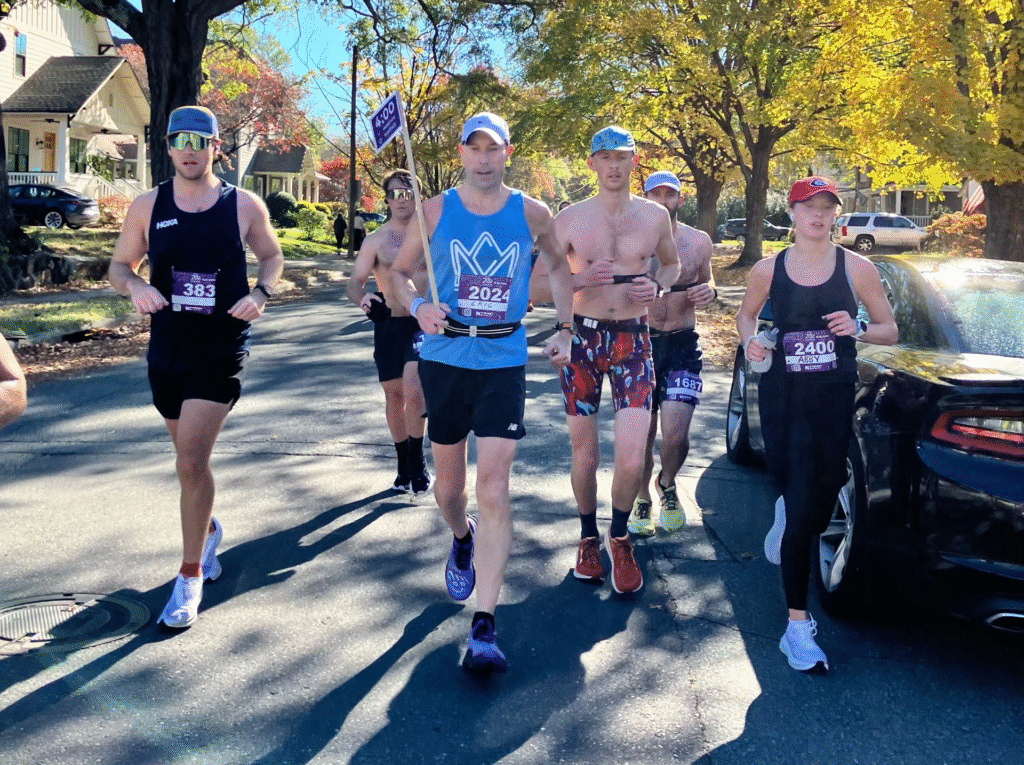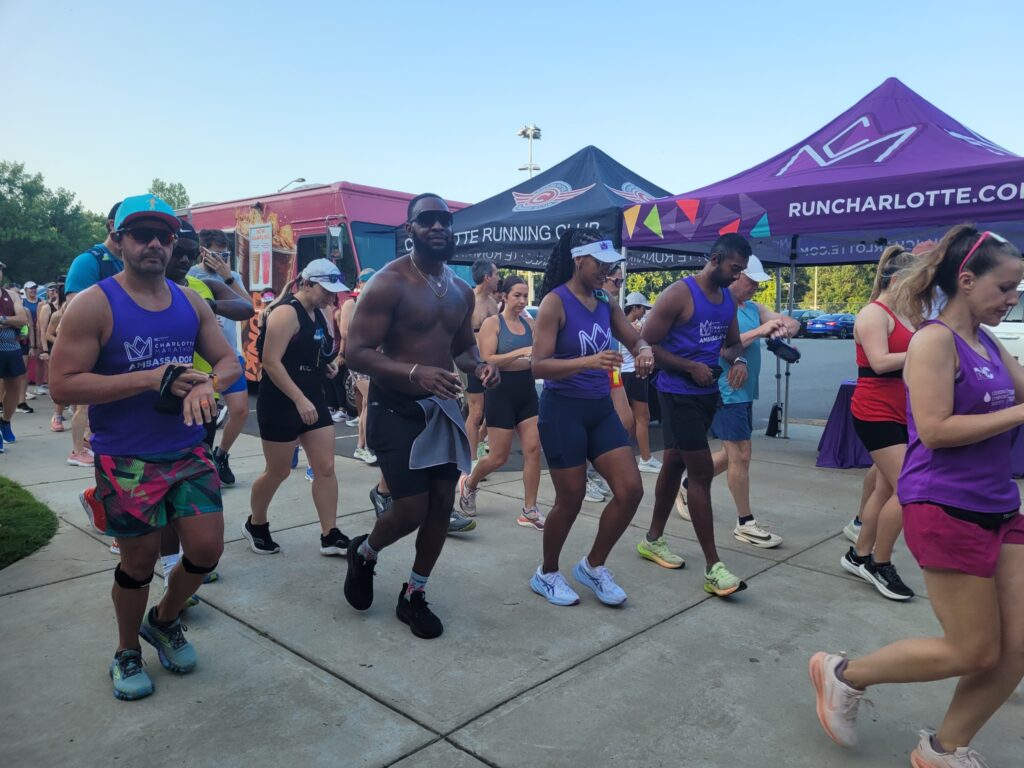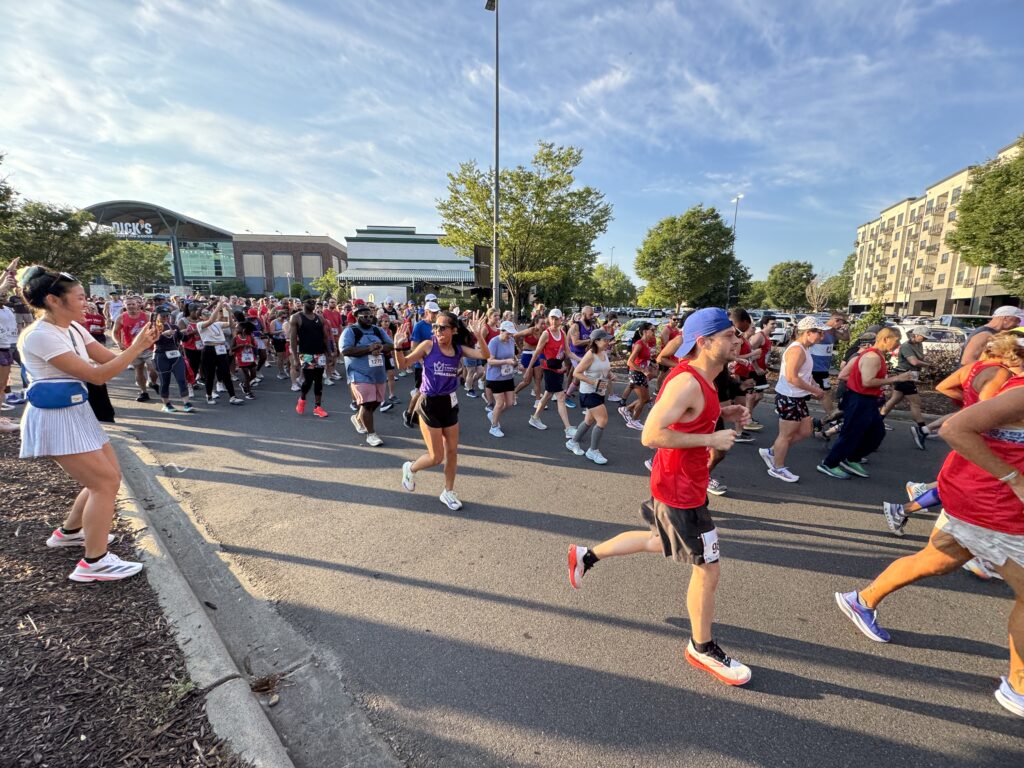If you’ve been feeling a little lonely lately, you’re not alone. Lonlieness isn’t just the stuff of the long distance runner – or the Iron Maiden song. (Google it.) A recent national survey from Cigna found that more than half of Americans report feeling lonely. Full disclosure; it was actually Ashley Mahoney’s Axios article that brought it to our attention. And that got us thinking about everyone in this running community. Are we ok?
Even in fast-growing cities like Charlotte, where about 157 people move in every day, making new friends can feel harder than ever. It’s ironic, really — with so many new faces and so much happening, it’s still so easy to feel disconnected. But here in the Queen City, there’s at least one thing that keeps bringing people together: Charlotte’s running culture. From small neighborhood meetups to the local, massive run club scene; running offers something that social media and group chats can’t: real connection.
By now, lots of area runners may know Lindsey McGee. She’s a run club regular, and Novant Health Charlotte Marathon Ambassador. But that wasn’t the case when she moved to Charlotte two years ago.

“When I moved here, I wouldn’t have even called myself a runner,” she says. “In other cities, run clubs felt kind of intimidating — like they were just for fast runners. But Charlotte’s clubs are different. They’re really inclusive of people who walk, run slowly, or are just getting started.”
For Lindsey, what started as a way to meet a few new people turned into more.
“Those connections can grow outside of running. Some of my best friends now are people I met at a run club — we go to dinner, grab coffee, celebrate birthdays. It starts with a run, but it doesn’t end there.”
That’s something Danielle Heath can corroborate. She moved her with no job and no real contacts. And now she’s Community Outreach Director at Fleet Feet Charlotte, where she’s literally helping runners find community and each other on the daily.
“Being here and integrating myself into the running community changed everything for me,” she says. “I’ve met my closest friends through running. Now, I get to help other people do the same — to build those connections and see how running brings people together.”
Professionals agree that connection and movement go hand in hand. Cliff Anderson, a Licensed Clinical Mental Health Counselor in Charlotte, and a runner himself. He often encourages his clients to find ways to get out and get active with others.
“For some folks, getting out and socializing becomes part of their ‘home practice’ in therapy,” he explains. “If someone likes running — or wants to try running for their health —local run clubs are a great option because they’re such a friendly bunch. It’s about finding the right fit for you.”

And with more than 80 run clubs around Charlotte, there’s a good chance you’ll find your fit somewhere. Lindsey sees it happen all the time.
“Sometimes it just takes one person to introduce you,” she says. “A friend of mine came to a run club at the Flying Biscuit after being here only a few weeks. We made sure someone kept an eye on him, and within days he had a whole group of friends. That’s the power of it — one run can turn into a whole community.”
Clare Kubiak knows that firsthand. She says running helped her find her people when she moved to Charlotte five years ago.

“There are so many welcoming run clubs and groups — all with open arms. Once you make one connection, it opens worlds for you. The first big step is just making that one connection.”
Loneliness can be a heavy feeling, but Charlotte’s running community has proven that sometimes the best way to lighten the load is to take that first step; even if it’s just around the block with strangers who might soon become friends.
If you’re looking to meet people who share your interests — or just want to make a new friend — try one of Charlotte’s local run clubs, or jump into an area race. You might find more than a running partner; you might find your community. And if your feelings of loneliness go deeper, help is available. Don’t hesitate to reach out to a licensed mental health professional. There’s no need to run that race alone.









